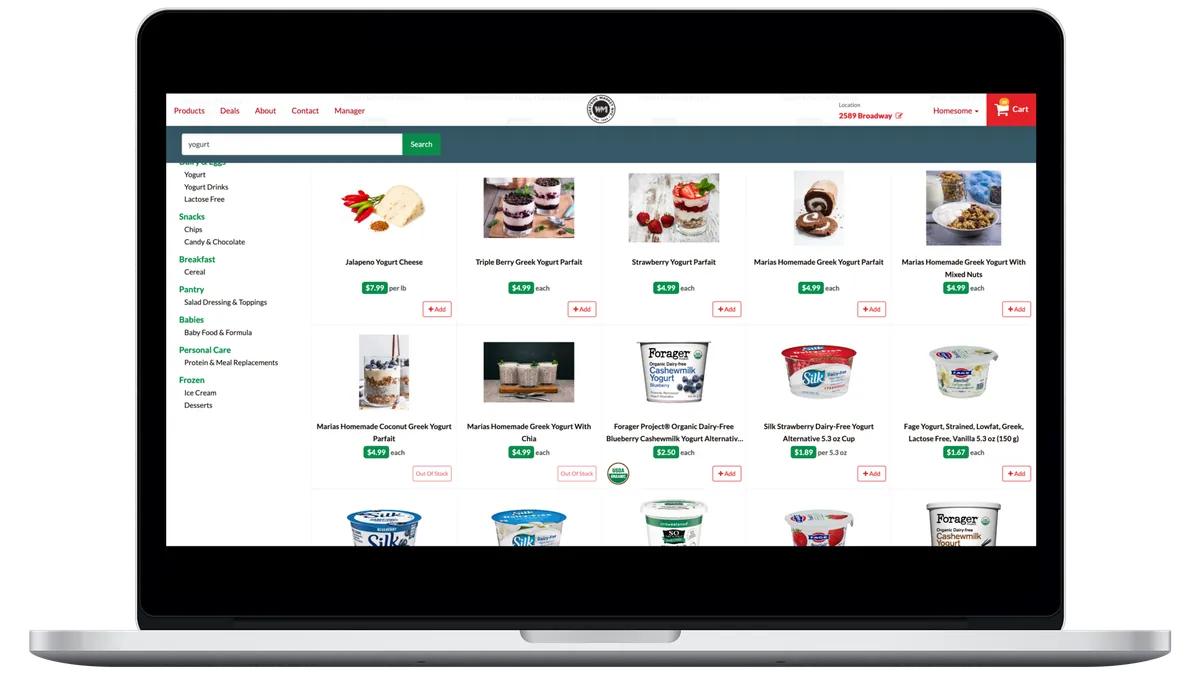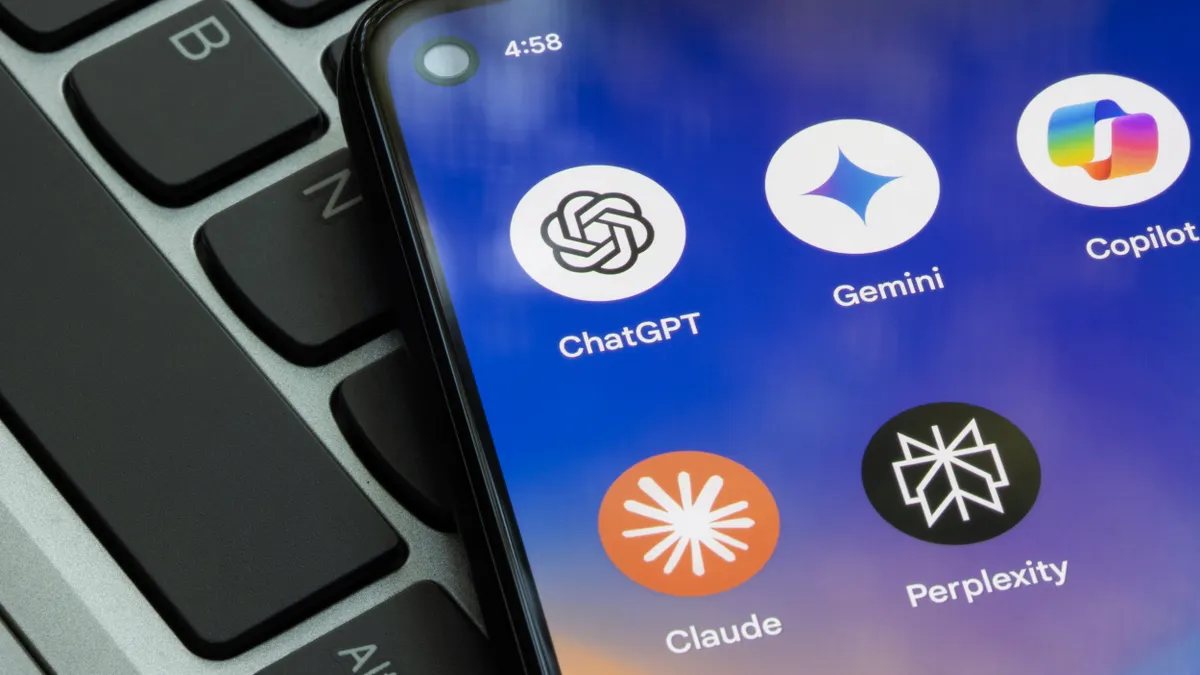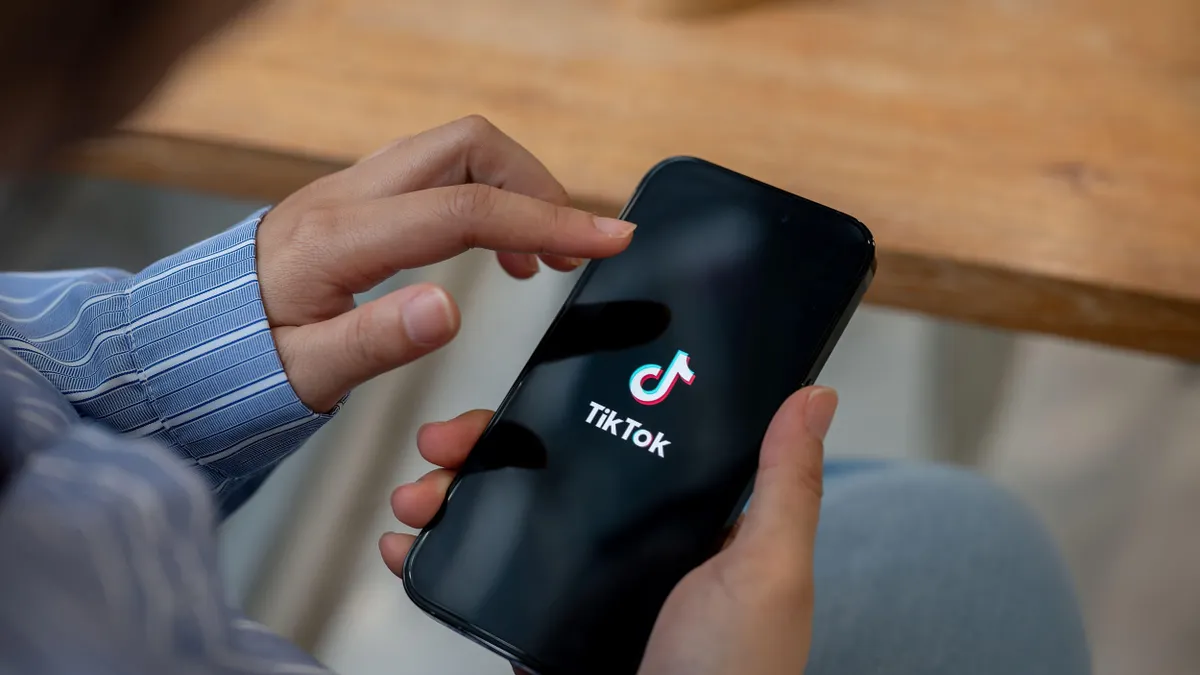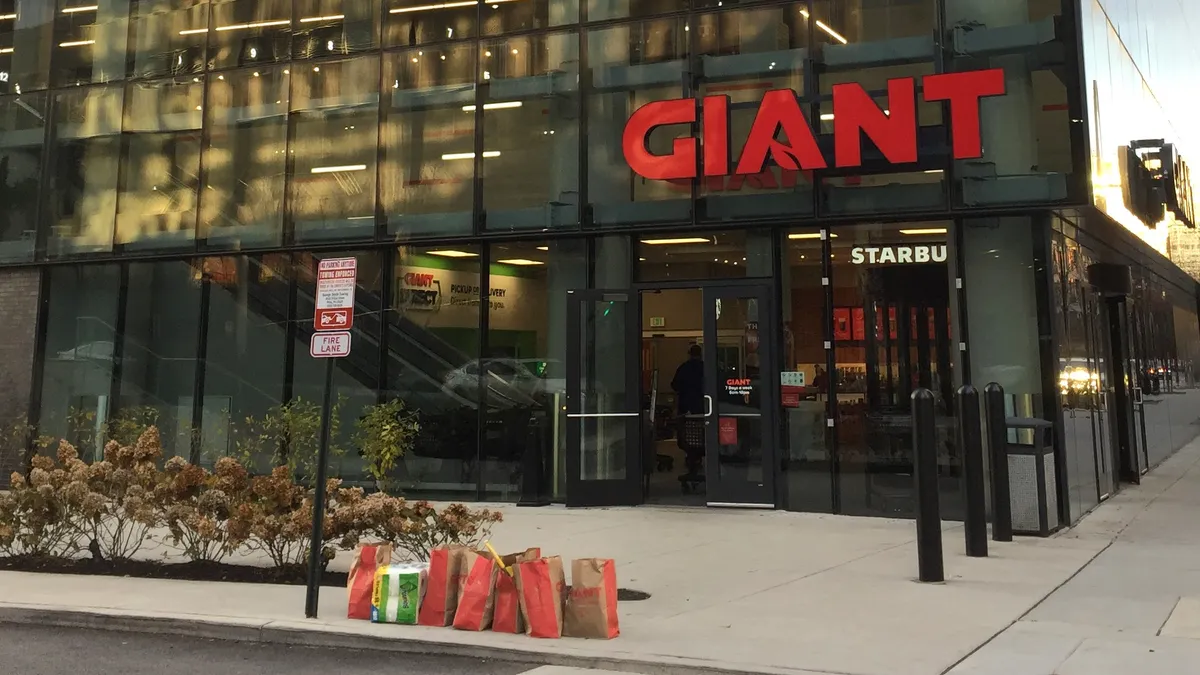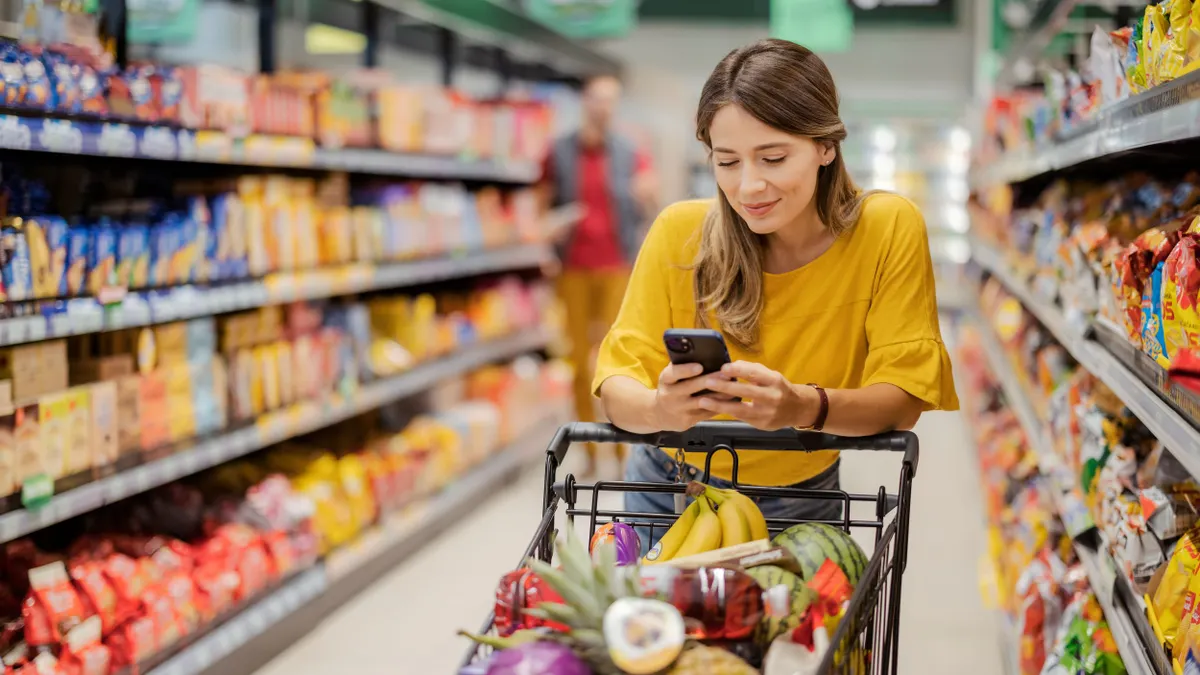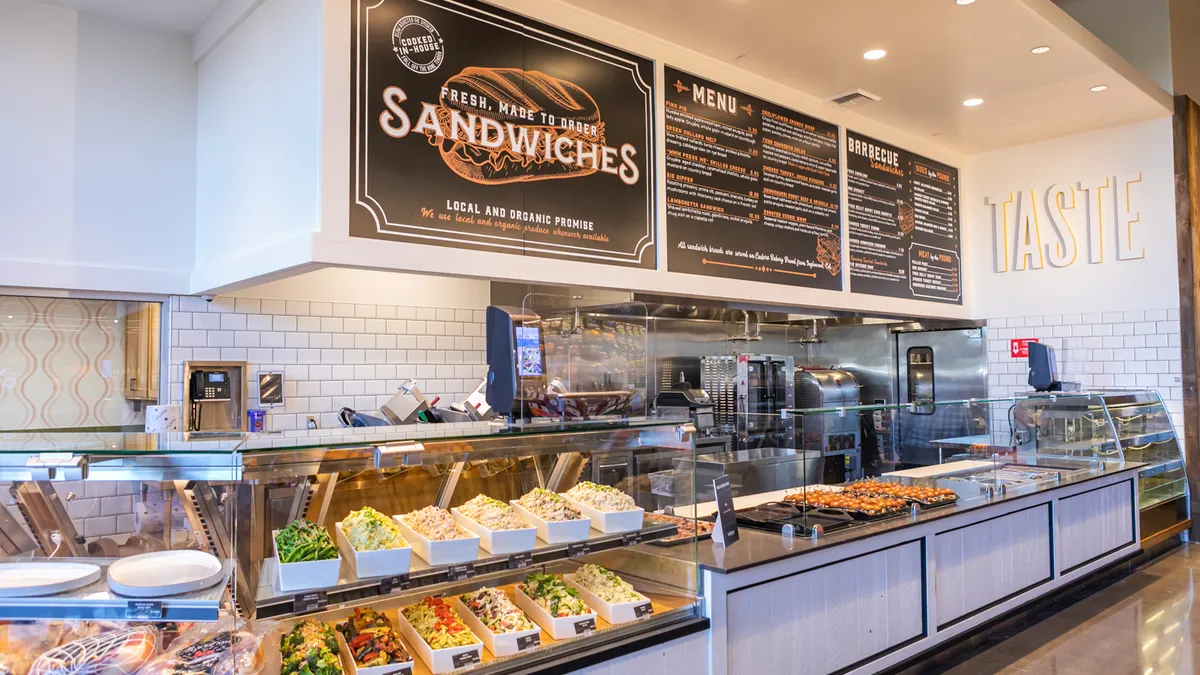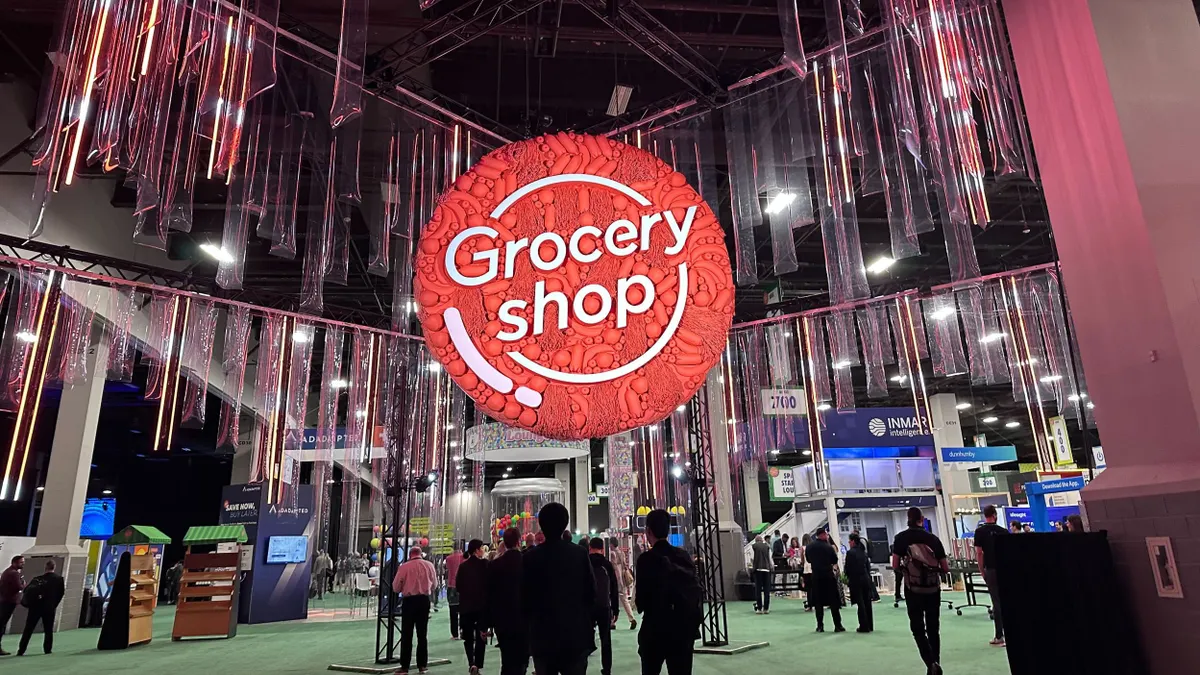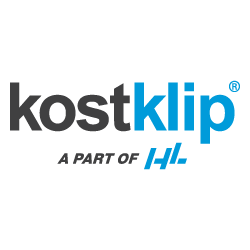Pardon the Disruption is a column that looks at the forces shaping food retail.
A predictable thing happens when industries migrate online: They try to digitally replicate the same customer experience that made their analog business successful. When magazines and newspapers shifted online more than two decades ago, their websites simply re-ran print stories. When music buying and movie rentals went digital, companies made their customers browse voluminous catalogs and then get their choices shipped to their homes.
These are necessary steps, often bounded by limitations in technology and operations. Over time, though, industries have carved out new digital-specific experiences that harness the channel’s ever-evolving technology while also addressing the unique ways people can interact with it. Publications have discovered digital mediums like podcasting and visual storytelling, and digital-only titles — ahem, like Grocery Dive — have proliferated. Netflix and Spotify have developed personalized, digital-first experiences that have refashioned how people interact with media.
Grocery shopping is still in that earliest phase of digital evolution. I may be picking my groceries from a laptop or iPhone screen, but the experience is still structured around the idea that I’ll browse thousands of items organized by store category, and then add each one individually to my virtual cart.
Offering an abundance of choice is something grocers have prided themselves on for years. But the approach is coming under considerable scrutiny these days as consumers look for convenient shortcuts and supply chain restrictions show retailers that it’s not the end of the world when they offer eight different kinds of pasta sauce instead of 18. In online grocery, abundance becomes even less of an advantage as shoppers, who can only view products one page at a time, simply hit the reorder button or tediously shop via the search bar.
A large assortment can be an advantage for grocers selling online, but they need to narrow the range — or personalize it, to use the industry buzzword — for each shopper. During a presentation last week by online grocery pioneer Ocado, CEO Tim Steiner pointed out that although the company offers around 50,000 products, shoppers only actively shop between 1,000 and 2,000 of those.
"Very few customers will ever shop more than that number of different items," he said. "The challenge is that those one to 2,000 items are different for every customer."
Companies of all sizes are taking slow, clumsy steps to tailor their assortments to shoppers. When I shop my local grocer online, the platform greets me by name, serves up a scroll bar of items I’ve ordered in the past and pushes some recommendations based on my past purchases. Since I bought a clamshell of salad greens last week, surely I’ll want a giant clamshell of greens this week.
I expect recommendations will improve as grocers incorporate better artificial intelligence and machine learning systems into their platforms. But companies also need to be thinking bigger about the unique opportunities digital offers and the ways they can reimagine the relationship with their shoppers through it.
There’s a comment that Abhi Ramesh, founder and CEO of online grocer Misfits Market, made to my colleague Sam Silverstein recently:
"Based on what I know about you, based on what I know you'll buy [and] what you won't buy, I can build a specific grocery store" for every customer, he said. "That power exists in the digital universe in a way that can never exist in person."
A unique grocery store for every customer. To me, this is the Netflix or Spotify opportunity for retailers — the way to truly harness the potential of online shopping. It means companies are not just pushing the most relevant products to shoppers, but useful services, meal-planning tools and other contextual shortcuts that promote loyalty and discovery as well. Consumers genuinely need help figuring out their weekly meal schedule and buying healthier foods. Grocers can craft digital storefronts for shoppers around these needs and hire the chefs, nutritionists and other personnel that would save shoppers time and mental workload.
'We're like Netflix plus Whole Foods'
Alex Weinstein, chief digital officer at online grocer Hungyroot, agrees the core grocery shopping experience has not evolved much over the years, even as nearly every retailer in the country has ushered in digital shopping. "I still have to do the meal planning myself, and I still have to browse the aisles to find those items, whether it's virtual aisles or physical aisles," he said.
Retailers have been pushing custom coupons and promotions to shoppers for years, and they’re getting better at recommending products. But true personalization, he said, means not just building a digital store for shoppers, but taking the mental load of shopping and meal planning off people’s plates, too.
Weinstein said Hungryroot's model is akin to “Netflix plus Whole Foods.” Instead of offering product pages for customers to shop, the company flips the script and presents them with a week’s worth of products like prepared meals, meal kits and groceries, along with a meal plan based on an intake survey that gauges their preferences, goals, family size and dietary restrictions. The survey includes around 10 targeted questions, like “Who are you feeding?” and “What kinds of meat do you like?” It figures out what combination of goals — like price, health, convenience, etc. — motivate users when shopping. Users can make substitutions on any meals or products in their list.
The idea of taking shopping out of the hands of the shopper may sound a bit out there to some retailers. But Weinstein, who previously worked in senior roles at Grubhub, eBay and Microsoft, said Hungryroot is responding to one of the top needs it’s found in surveying people.
“We hear from consumers again and again that it's just difficult to plan their meals for the week, and they wish that there was an easy way where somebody would fill their cart for them,” he said.
Hungryroot's model requires a leap of faith for the people who use it. And it seems to be geared mainly toward specialty consumers, who tend to be more adventurous in their food shopping. Weinstein said, however, that artificial intelligence and machine learning technology are getting good enough nowadays to push meal plans, snacks and beverages into people’s carts that they will accept. He wouldn’t say what percentage of Hungryroot’s recommendations people accept or reject, but said the company’s goal is for users to approve the majority of their tailored lists and only make a couple substitutions at most. The technology is getting better as it learns more about people's preferences and shopping habits. "We're maybe 20% or 30% of the way" toward personalizing shopping the way Weinstein said he'd like.
He noted that user personalization is an ongoing process for Hungryroot. In addition to collecting data, it pushes a few targeted questions to people every week about their latest delivery. It wants to know if a dish was too spicy or if they really liked a certain salad or felt just so-so about it. The feedback helps its recommendation engines improve, said Weinstein. The company employs chefs that create dishes and also help craft the questions to ask users.
Hungryroot is careful not to bombard its users with questions, Weinstein noted. Still, they’re generally okay with the company asking every week about their experience because the company is upfront about the fact that this input will help them make better recommendations.
"You can learn a lot from implicit behaviors from the consumer. However, if you actually ask them, you have a shot at doing a much better job, and you also have an expectation with the consumer that you're their curator," said Weinstein.
Opening up 'experiential moments'
Should every grocer take a personal chef approach like Hungryroot? Of course not. I’m mainly highlighting the company’s model because it’s an example of what’s becoming possible in digital grocery thanks to creative thinking along with advancements in AI, software and other technologies.
What other possibilities are out there? For inspiration, companies should turn to online-only grocers and digital grocery firms whose expertise in that channel has pushed them to the cutting edge of experience innovation. These companies think a lot about how to inspire shoppers to buy more than just the same products week in, week out.
Farmstead, which delivers a full range of groceries in a handful of cities, lets shoppers automate the fulfillment of staple goods like milk and bread, and uses artificial intelligence to only show customers the items they're likely to want to buy. Anycart, which links up with grocery chains like Safeway and Whole Foods to deliver groceries, organizes its online shopping platform according to meal occasions, shopper goals and trends like air-fryer friendly products. Instead of adding items one-by-one, users can click on a dish they want to make and it automatically loads the ingredients to their cart.
Grocery Shopii, a technology company that integrates with grocers’ platforms, lets shoppers create profiles and recommends products organized according to recipes and meal plans, said co-founder Katie Hotze. It's currently offered through e-commerce firm Freshop’s platform and is live for customers of Reasor's, a 17-store chain in Oklahoma.
"I think personalization is absolutely key to being able to open up those experiential moments for shoppers who have been making tacos and pizza and pasta every night for the last 20 months," Hotze told me recently.
Grocers talk all the time about boosting convenience for their shoppers. When it comes to online shopping, I think they understand that shoppers have gravitated toward the channel in order to save time and physical effort. But they're only beginning to scratch the surface of the ways it can inspire them, help solve problems and reduce their mental workload.



